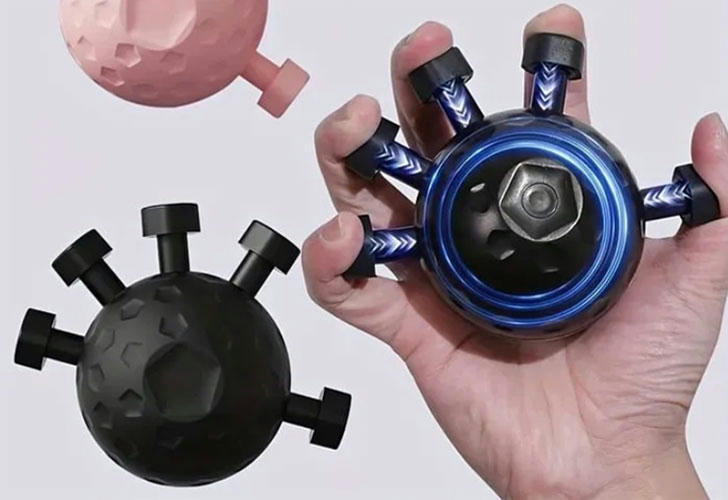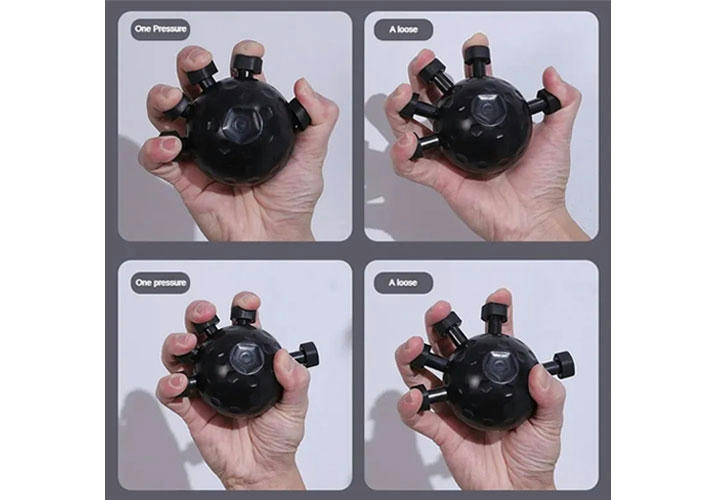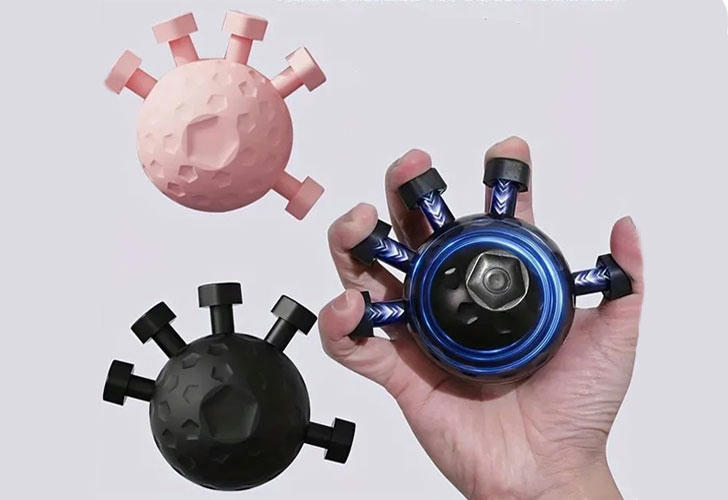How a Simple Finger Grip Strengthener Changed My Parkinson’s Rehab Journey
When my father first received his Parkinson’s diagnosis, our family was determined to do everything we could to help him maintain his independence. Physical therapy, medication adjustments, and daily exercises quickly became part of our routine. But one unexpected tool turned out to be a game-changer: the humble finger grip strengthener. Here’s our story of how a simple gadget—with its hot-sale offer—became the secret star of Dad’s home rehab.

1. The Promise and the Struggle
When Dad started noticing tremors in his hands, he was worried about losing dexterity—things like buttoning his shirt or holding a coffee mug became challenging. His physical therapist introduced a range of exercises, from wrist rotations to resistance band pulls. They all helped, but none felt as personally empowering as the finger grip strengthener.
Why It Matters for Parkinson’s
Parkinson’s disease often leads to weakened grip strength and reduced fine motor control. This affects daily tasks—writing, eating with utensils, even turning keys. Strengthening those small muscles can improve hand control, slow functional decline, and boost confidence.
2. Discovering the Finger Grip Strengthener
One afternoon, while browsing online for affordable rehab tools, I stumbled on a device marketed as “ 💪 Finger Grip Strengthener.” The product page boasted adjustable resistance levels, ergonomic handles, and a compact design—perfect for home use or slipping into a pocket.
Key Features:
- Adjustable Tension: Tailor resistance from light to heavy as strength improves.
- Ergonomic Grip: Soft, non-slip handles protect fatigued hands.
- Portable Design: Use while watching TV, riding in the car, or waiting for appointments.
- Affordable Price: With the current 49% off deal, it’s hard to find a more cost-effective rehab tool.
I ordered two—one for Dad’s nightstand and one for our living room coffee table. Little did we know how quickly they’d become indispensable.
3. Integrating Into Daily Rehab
Morning Routine
Dad begins each day with deep-breathing exercises and gentle stretches. After his coffee, he sits by the window and uses the grip strengthener for three sets of ten squeezes per hand. The adjustable tension lets him start light—an important safety precaution—and gradually increase as his grip improves.
Between-TV Breaks
My mother bought a small basket and placed one strengthener next to the remote. Every commercial break becomes an opportunity for two sets of fifteen squeezes. It’s surprising how those few extra reps add up!
On-the-Go Practice
Appointments often involve waiting—at the pharmacy, lab, or clinic. Dad tucks the portable device into his pocket and discreetly squeezes to pass the time, keeping his hands active instead of stiffening from inactivity.
4. Real Results, Real Stories
After six weeks of consistent use, Dad noticed tangible benefits:
- Improved Grip: He could hold a glass of water without fearing it might slip.
- Better Coordination: His handwriting grew steadier, and signing checks felt less of a strain.
- Enhanced Confidence: Mastering resistant squeezes gave him a sense of accomplishment every day.
One morning, he surprised us by making his own breakfast—cracking eggs and pouring batter into the pan with minimal help. That small victory sparked a wave of “first independent tasks” that brightened all our days.
5. Why It Works
The finger grip strengthener targets intrinsic hand muscles—those small stabilizers often neglected in larger arm workouts. By focusing on these muscles:
- Muscle Activation: Repetitive squeezing recruits both flexor and extensor muscle groups.
- Neuroplasticity: Regular practice reinforces brain-to-muscle pathways, crucial for Parkinson’s rehabilitation.
- Functional Carryover: Stronger grips translate into easier everyday activities, from buttoning shirts to opening jars.
Therapists agree: consistency matters more than intensity. A device that’s comfortable and convenient dramatically increases adherence to exercise plans.
6. Tips for Effective Use
- Start Slow: Begin with the lowest resistance and short sets—overdoing it can lead to fatigue or soreness.
- Track Progress: Keep a simple journal of resistance level, reps, and any improvements in daily tasks.
- Combine Therapies: Use alongside wrist circles, tactile exercises (like picking up marbles), and hand stretches.
- Maintain Safety: If pain occurs, reduce resistance or consult a therapist before continuing.
- Stay Consistent: Make usage part of an existing routine—morning coffee, TV breaks, or commute downtime.
7. Where to Get Yours
This finger grip strengthener is currently on a limited-time hot sale—a perfect opportunity to invest in your or your loved one’s hand health. Its low cost, adjustable settings, and portable design make it an ideal addition to any Parkinson’s rehab toolkit.
Conclusion
Our journey with Parkinson’s has had its share of challenges, but little wins like improved grip strength remind us that progress is possible. Sometimes, the simplest tools—like a finger grip strengthener—can offer the biggest boost in independence and confidence.
If you’re supporting someone with Parkinson’s or just looking to strengthen your own hands, consider adding this versatile device to your daily routine. Squeeze away, celebrate each milestone, and watch how a small gadget can foster big changes—one grip at a time.



